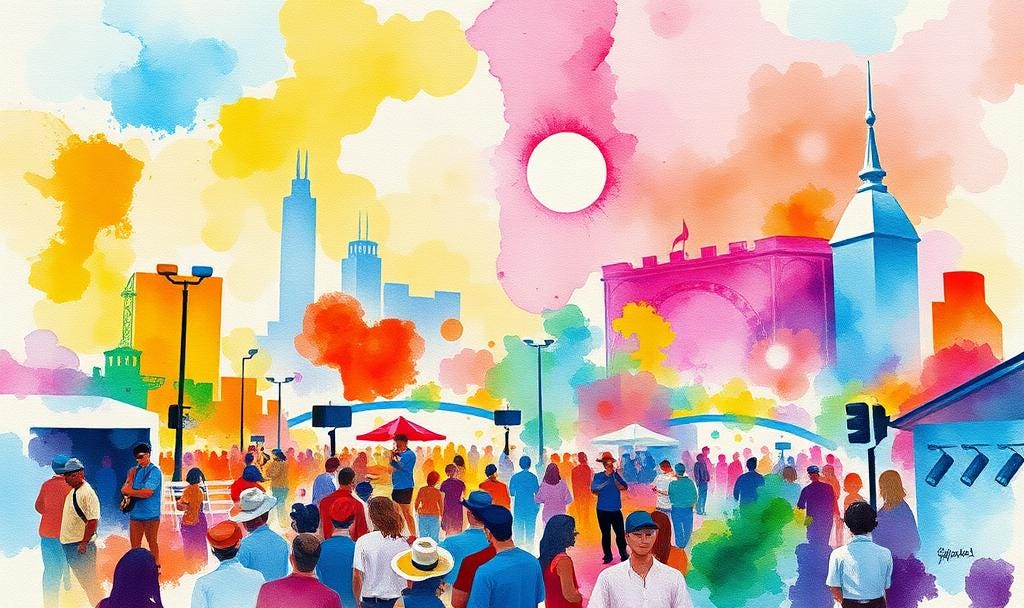This is part of my Pop Music in the ‘80s series.
By the late 1980s, the country music industry found itself at a pivotal crossroads. The pop-country flirtations that defined the decade were beginning to shift, and Nashville, long seen as both the guardian and gatekeeper of country tradition, was quietly reinventing itself. This transformation would lay the groundwork for a renaissance of country in the early 1990s; one that blended commercial appeal with renewed artistic ambition.
The Rise of a New Generation
Artists like Randy Travis and George Strait had already reintroduced neotraditionalism earlier in the decade, but by the end of the ‘80s, their influence was helping to shape a younger generation poised to dominate the ‘90s. Clint Black, Garth Brooks, Alan Jackson, and Travis Tritt were no longer commercial newcomers, they were seen as Nashville’s answer to a marketplace ready for a fresh, emotional, and often bigger-than-life sound.
Their success was aided by a shift in production values: more polished than the outlaw recordings of the ‘70s, yet more grounded than the crossover pop hits of earlier in the decade. These artists didn’t reject tradition, they reimagined it for stadiums and TV screens.
Label Strategy and Industry Modernization
Record labels like Capitol Nashville and Arista Nashville (founded in 1989) embraced aggressive A&R strategies. The rise of Music Row marketing was an intentional pivot to compete with pop and rock on their own terms, supported by increasingly sophisticated radio promotion, music video production, and national tours.
The music video boom, largely thanks to The Nashville Network (TNN) and Country Music Television (CMT) provided a national stage and visual identity for country artists who may otherwise have only been regional favorites. CMT in particular helped country music gain parity with MTV in terms of cultural reach, even as the two formats diverged in content and tone.
Technological Changes and Studio Innovation
Behind the scenes, the sound of Nashville was changing as well. The adoption of digital recording technology and evolving studio techniques helped usher in a sleeker sonic profile. Producers like Tony Brown, Jimmy Bowen, and Scott Hendricks were instrumental in blending crisp pop elements with traditional arrangements, a move that made Nashville sound more “modern” without losing its roots.
This was also the era of professionalized songwriting, with institutions like the Bluebird Café becoming crucial testing grounds for new songs. Writers like Don Schlitz, Bob McDill, and Mary Chapin Carpenter helped shape the narrative richness of the period with deeply personal and resonant lyrics.
Women at the Forefront
Artists such as Reba McEntire and Kathy Mattea led a new generation of women in country who would command enormous influence in the coming decade. Reba in particular bridged the theatricality of pop performance with deeply country storytelling, setting the stage for crossover icons like Shania Twain and Faith Hill in the 1990s.
The commercial success of these women reflected broader changes in the industry, from more exclusive radio programming to an expanding base of suburban and urban listeners who no longer viewed country music as a purely rural tradition. You no longer had to live in the country to like country music!
A Platform for the Future
By 1989, the pieces were in place: a new cohort of artists, a savvy industry infrastructure, and a mass audience ready to embrace a more emotionally expressive and sonically ambitious version of country. The millieu of country music was primed for Garth Brooks to debut that year. And the commercial success of his debut really it marked a turning point. His sound, his showmanship, and his crossover instincts signaled that country’s next era would be bigger, bolder, and more mainstream than ever before.
In hindsight, Nashville didn’t just reinvent itself, it rebranded the very idea of country music for a new generation. And as the decade turned, the genre was poised not just to survive but to dominate. The 1988 Hank Williams, Jr. song “Young Country” summed this shifting tide up well:
We like old Waylon, hey we know Van HalennWe like ZZ Top, we like country and rocknOld Hank would be proud, and Elvis would toonWe like our country mixed with some big city blu’s

